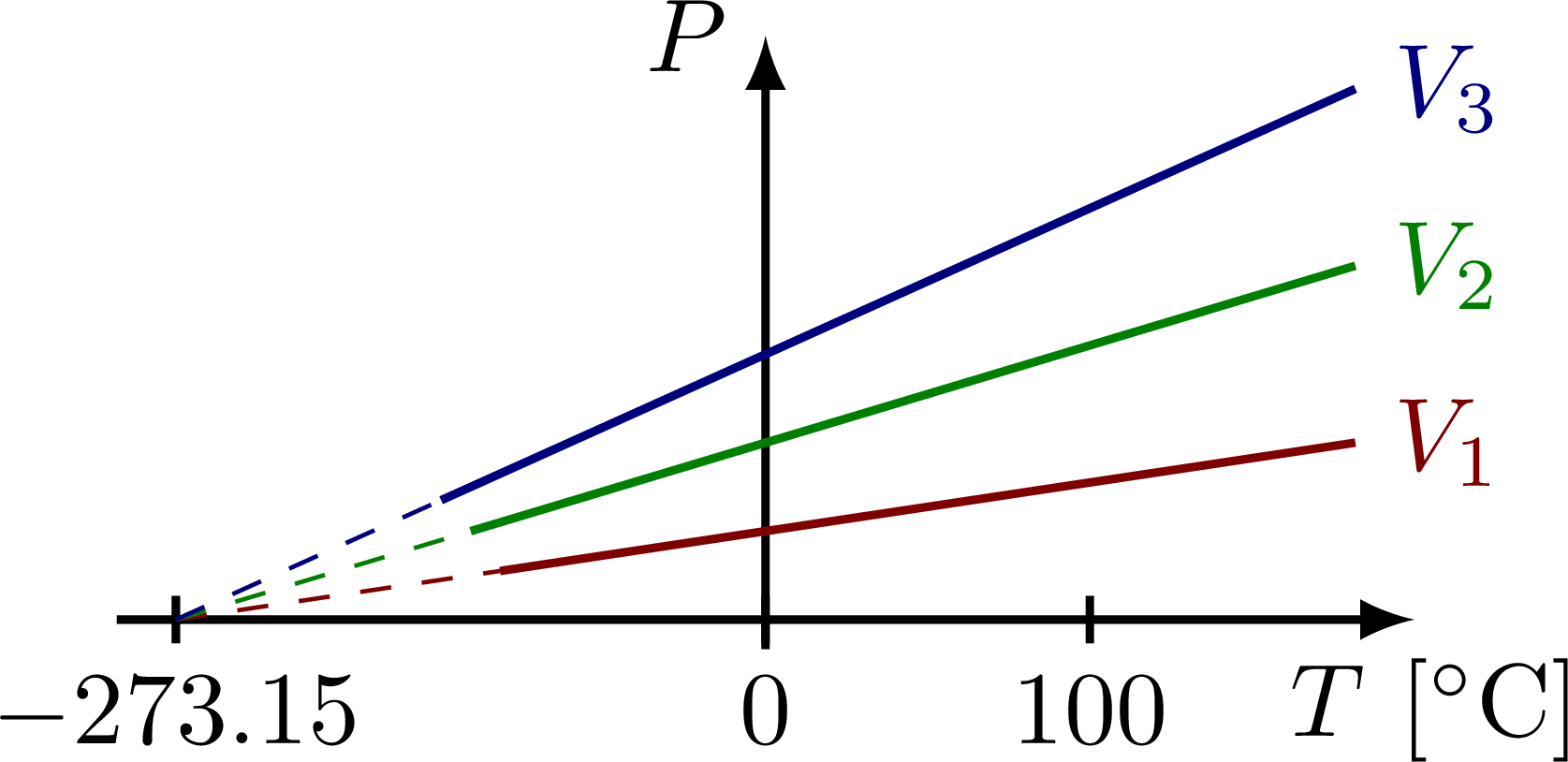Thermodynamic functions, like resistance, isochores and isotherms.
For more figures related to thermodynamics, see the “thermodynamics” category.
Edit and compile if you like:
\documentclass[border=3pt,tikz]{standalone}\usepackage{amsmath,amssymb}\usepackage{tikz}\tikzset{>=latex}\colorlet{myblue}{black!50!blue}\colorlet{mygreen}{black!50!green}\colorlet{myred}{black!50!red}\begin{document}% RESISTANCE vs. TEMPERATURE\begin{tikzpicture}\def\N{20}\def\xmin{-0.1} \def\xmax{1.6}\def\ymin{-0.1} \def\ymax{1.6}\draw[->,thick](\xmin,0) -- (1.1*\xmax,0) node[right] {$T$};\draw[->,thick](0,\ymin) -- (0,1.1*\ymax) node[above=5pt,below left,align=center] {$R$\\ or $\rho$};\draw[thick,myblue,variable=\x,domain=0:\xmax,samples=\N,smooth]plot (\x,0.3+\x*\x/2);\end{tikzpicture}% PRESSURE vs. TEMPERATURE\begin{tikzpicture}\def\xmin{-2.0} \def\xmax{2.0}\def\ymin{-0.1} \def\ymax{1.8}\def\tick#1#2{\draw[thick] (#1+.08) --++ (0,-.16) node[below=-.5pt] {#2};}\def\ym#1#2{#1*\xmin,{#2*(#1*\xmin-\xmin)/(\xmax-\xmin)}}% AXIS\draw[->,thick](1.1*\xmin,0) -- (1.1*\xmax,0) node[right=2,below] {$T$ [$^\circ$C]};\draw[->,thick](0,\ymin) -- (0,1.1*\ymax) node[left,align=center] {$P$};% TICK\tick{\xmin,0}{$-273.15$}
Click to download: thermodynamics_functions.tex • thermodynamics_functions.pdf
Open in Overleaf: thermodynamics_functions.tex




